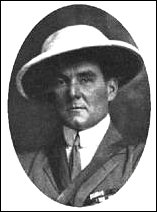LAST November, engineers in the healthcare division of General Electric unveiled something called the “LightSpeed VCT”, a scanner that can create a startlingly good three-dimensional image of a beating heart. This spring Staples, an American office-supplies retailer, will stock its shelves with a gadget called a “wordlock”, a padlock that uses words instead of numbers. In Munich, meanwhile, engineers at BMW have begun prototyping telematics (combining computing and telecoms) and online services for a new generation of luxury cars. The connection? In each case, the firm's customers have played a big part GE, BMW or the leading role (Staples) in designing the product.
How does innovation happen? The familiar story involves boffins in academic institutes and R&D labs. But lately, corporate practice has begun to challenge this old-fashioned notion. Open-source software development is already well-known. Less so is the fact that Bell, an American bicycle-helmet maker, has collected hundreds of ideas for new products from its customers, and is putting several of them into production. Or that Electronic Arts, a maker of computer games, ships programming tools to its customers, posts their modifications online and works their creations into new games. And so on. Not only is the customer king: now he is market-research head, chief and product-development manager, too.

No comments:
Post a Comment